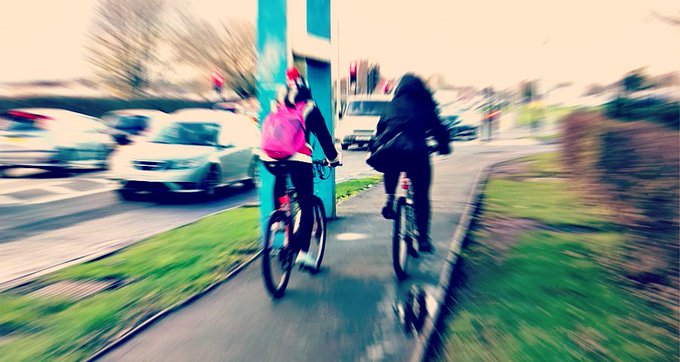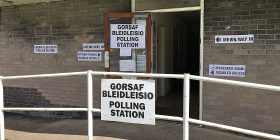Additional £30million to be invested in ‘active travel’ projects across Wales

Last week, the Welsh Government announced an additional £30million towards active travel projects across Wales, while the First Minister said work has started on introducing a blanket 20mph speed limit in residential areas. Yesterday, AMs were given the opportunity to ask questions.
Extra resources to meet challenges and underperformance
Deputy Economy Minister, Lee Waters (Lab, Llanelli), said the Senedd’s recent declaration of a “climate emergency” brought transport’s contributions towards carbon emissions into sharper focus (13% of emissions in Wales), with over half of all car journeys being five miles or less.
Despite the Active Travel Act, he accepted that the goals that piece of legislation set simply haven’t been met yet; so for the first time ever, the Welsh Government will be spending £30million on active travel in a single financial year.
“Resources will always be scarce….We can’t afford to spread the jam so thinly that communities get a bit of path but not enough to get them anywhere. We have to concentrate our resources on building routes that will allow people to make whole journeys to places they need to get to, in safety and comfort from their home to work, or school to the shops.”
– Deputy Economy Minister, Lee Waters
Some of the money would be set aside for extra training (presumably for planning officers and alike), while the bulk of it would be spent on new walking and cycling infrastructure. He didn’t want councils to look solely at long stretches of segregated paths, but to consider smaller, more localised, measures to remove barriers facing the disabled, pedestrians and cyclists.
Shadow Economy Minister, Russell George AM (Con, Montgomery), wasn’t too impressed by Welsh Government actions (or lack of) to date. As chair of the Economy & Infrastructure Committee, he was pleased to see some of their recent recommendations taken on board. One of their recommendations was that spending on active travel reaches £20-per-head; how far does this announcement go?
The Deputy Minister said it was closer to £10-a-head; while it’s lower than he would like it’s a good place to start. Money wasn’t necessarily the issue. He wanted councils to focus on enhancing routes people will actually use, not pump money into under-used and badly-designed projects which undermine the whole active travel agenda.
An important milestone
Rhun ap Iorwerth AM (Plaid, Ynys Môn) described the £30million investment was “an important milestone”, but he too would like to see further progress to a £20-per-head figure (which would be closer to £60million). Scotland invests £80million annually for want of comparison. Rhun also noted the difference between talking at the top and action on the ground.
While the Deputy Minister wanted to be kind he said there was a lack of ambition by some councils, mainly due to capacity and skills issues than laziness.
Jenny Rathbone AM (Lab, Cardiff Central) – who’s often criticised home-school transport by car – asked how many schools have developed active travel plans?
The Deputy Minister picked out YGG Hamadryad in Cardiff as an example of good practice; they have a planning condition that no cars are allowed.
“….if we get this right, it is a complete win across all those agendas, and healthy living, and healthier lifestyles, and dealing with things like, in the Llynfi valley, where there’s a 20-year lifespan difference between the top of the Llynfi valley and the bottom of the Llynfi valley. That’s incredible, and part of this is what we’re looking to deal with.”
– Huw Irranca-Davies AM (Lab, Ogmore)
John Griffiths AM (Lab, Newport East) raised a key point about the cost of traffic orders to change speed limits and that a default 20mph limit with orders subsequently required to raise the limit to 30mph would be the most cost-effective way of doing it and the Deputy Minister broadly agreed.
Spotted something? Got a story? Send a Facebook Message | A direct message on Twitter | Email: News@Deeside.comLatest News









